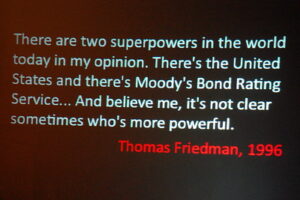On Friday, the Bureau of Labor Statistics (BLS) released the employment numbers for the month of July. They were – in a word -hot. According to economists at the agency, US employers added more than a half-million new jobs. That dropped the national unemployment rate to 3.5%, matching the unemployment rate noted in February 2020. This is not great news for anyone hoping to see a big increase in fall enrollment at the community college.
The sectors showing the most job growth were Leisure and Hospitality, Professional and Business Services and Healthcare. Women returning to the labor force accounted for some of the job growth. Unemployment among women dropped by 3.1%. The BLS also recorded 1.2M permanent job losses, but that figure is down from 1.39M in February 2020.
Long-term unemployment, defined as involuntary joblessness for 27 consecutive weeks or more, also declined to 1.1M. That level matches the number of long-term unemployed persons in February 2020, at the onset of the pandemic. Other key metrics also mirrored the joblessness report for February 2020, leading analysts to conclude that the impact of the pandemic on unemployment has been largely neutralized.
With joblessness at a low point and wages at a high, there’s not much incentive for people to return to the classroom. Instead, many will opt to join the workforce instead. According to the Department of Education, the number of FAFSA completions – another indicator of fall enrollment plans – declined from last year among Michigan students. Currently, fewer than half (47.9%) of Michigan’s high school seniors completed the financial aid application. While there is no requirement that students complete the FAFSA, financial aid filings often signal the individual’s post-secondary plans.
The community college needs new programs, not new marketing
This is not good news for the community college. For more than 50 years, the Washtenaw Community College administration has been asking voters in the county to make sacrifices. Those sacrifices, we have been told, will ensure WCC’s long-term future.
Washtenaw County voters have no problems sacrificing for education. However, enrollment – not hotels, side programs, convention business, and a health club – will determine the relative performance of our investment.
Voters here aren’t asking for a hotel or a convention center. They’re asking for updated vocational and occupational education programs that prepare students for in-demand careers. They’re asking for low-cost, high-quality education options that will improve their earnings after graduation. This is exactly what we’re not getting from the WCC administration.
WCC needs to compete with a roaring job market. It’s time for the expansive, expensive WCC administration share with the community exactly what they’re doing to increase enrollment. We also need to know how effective these actions are.
Enrollment isn’t dropping because WCC isn’t marketing itself well enough. Rather, as time goes on, WCC has less to offer prospective students. There’s no visible strategy to build authentically new academic programs. What passes for “new” programs are just different combinations of existing classes, with minimal new course development. It’s as though someone has introduced WCC’s course catalog to a salad spinner with the hope that something good will come out.
The Trustees should spend less time extending the President’s contract and more time demanding performance from the WCC executives. The community pays a lot for WCC; we should get something out of it.
Photo Credit: Bruce Turner, via Flickr























